Explore Kasane - Botswana Travel, Africa
Kasane, located in the northeastern corner of Botswana, is a bustling town that serves as the entryway to one of Africa's most spectacular natural beauties—Chobe National Park. Known for its strategic location near the borders of Zimbabwe, Zambia, and Namibia, Kasane has become a popular hub for travelers seeking adventure and wildlife encounters. This charming town offers a unique blend of culture, history, and outdoor excitement, making it a must-visit destination for anyone exploring Botswana. Whether you’re an avid safari enthusiast or simply looking to immerse yourself in the local culture, Kasane promises an unforgettable experience.
Population: Approximately 9,300 in 2011.
Economy: Kasane's economy is primarily driven by tourism due to its proximity to Chobe National Park and the Zambezi River. Wildlife safaris, hospitality services, and local crafts are key contributors to its growth.
Landmarks: Famous for the Chobe National Park, Kasane Forest Reserve, and the Victoria Falls.
Botswana
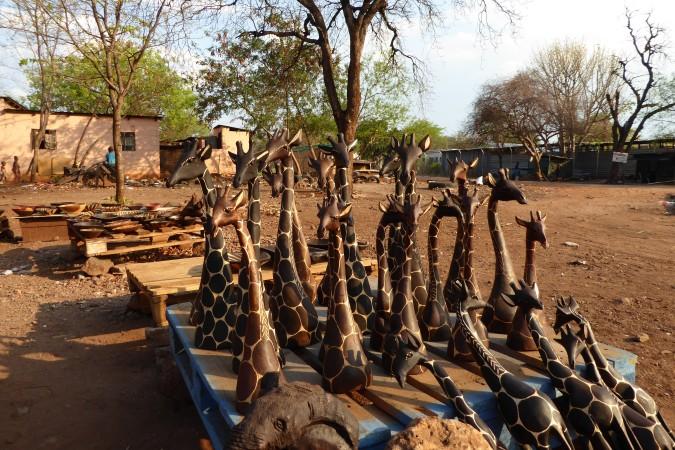
Overview of Kasane
History & Cultural Influence
Kasane's rich history is deeply intertwined with the traditions of the Tswana people, the region’s indigenous inhabitants. Originally a modest settlement, the town gained prominence due to its proximity to Chobe National Park and the major wildlife migrations that occur in the area. The town’s development was further accelerated by its strategic location near international borders, making it a key point for trade and tourism. Visitors can observe the blend of traditional Tswana designs with colonial-era structures, reflecting the town's diverse historical influences. Today, Kasane stands as a testament to Botswana's resilience and cultural richness, offering a unique glimpse into the past and present of this fascinating region.
Interaction with The Locals
Kasane, a small town in Botswana, has a population of approximately 9,300 residents. The community is predominantly Tswana, reflecting the broader ethnic composition of Botswana. The town is known for its welcoming atmosphere and vibrant local culture. Residents are engaged in various activities, from tourism and wildlife conservation to local crafts and agriculture. The blend of traditional Tswana customs with modern influences creates a unique and dynamic living environment for both locals and visitors.
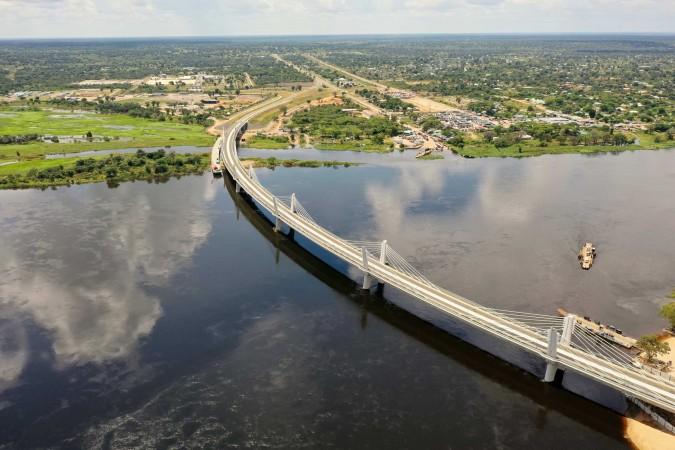
Kasane city, Botswana - © Botswana Tourism
Top Attractions in Kasane
Chobe National Park
Spanning over 11,000 square kilometers, Chobe National Park is one of Botswana's premier wildlife destinations. The park is renowned for its massive elephant herds, which are among the largest in Africa. Visitors can enjoy thrilling game drives through diverse landscapes, including savannas, swamps, and woodlands, where they might encounter lions, leopards, buffaloes, and numerous bird species. Boat safaris along the Chobe River provide a unique vantage point to see wildlife as they come to the river to drink. This park offers an unparalleled opportunity to witness the great migration of elephants and other wildlife.
Kasane Forest Reserve
Located just east of the town, the Kasane Forest Reserve is a tranquil escape into nature. This lesser-known attraction is perfect for those seeking a more peaceful and intimate wildlife experience. The reserve features dense woodlands and open savannahs, offering excellent opportunities for birdwatching and spotting smaller game. Nature enthusiasts can explore the reserve on guided walks or self-drive excursions, enjoying the serene environment and learning about the local flora and fauna.
Victoria Falls
Situated about 80 kilometers from Kasane, Victoria Falls is one of the most awe-inspiring natural landmarks in the world. Known locally as "Mosi-oa-Tunya" or "The Smoke That Thunders," the falls stretch over 1.7 kilometers wide and drop 108 meters into the Zambezi Gorge. Visitors can view the falls from various vantage points, including the dramatic Devil’s Pool, where thrill-seekers can take a dip at the edge of the falls. The surrounding area offers a range of activities, from helicopter tours to bungee jumping, making it a perfect day trip from Kasane.

Chobe National Park - © Chobe National Park Official
Must-Try Dishes in Kasane
Kasane offers a delightful array of local and regional dishes that showcase the rich culinary heritage of Botswana.
- Seswaa: This traditional Tswana dish consists of slow-cooked beef or goat, seasoned with salt and pepper, and often served with a side of maize porridge known as pap. The meat is simmered until tender and flavorful, making it a staple at local gatherings and celebrations.
- Pap: A fundamental part of Tswana cuisine, pap is a staple made from maize meal. It has a smooth, porridge-like consistency and serves as the perfect accompaniment to meat dishes like seswaa. Pap is often enjoyed with meat stews or vegetables.
- Bogobe: This millet porridge is a traditional Tswana dish that can be enjoyed plain or with various accompaniments, such as meat or vegetables. It’s a hearty and nutritious option, often served for breakfast or as a side dish.
- Morogo: Also known as wild spinach, morogo is a leafy green vegetable commonly used in Tswana cooking. It’s typically sautéed with onions and spices, and served as a side dish with meat or pap.
- Kapana: A popular street food in Botswana, kapana is grilled beef, often served with a spicy relish and flatbread. It’s a flavorful and satisfying option for a casual meal or snack.
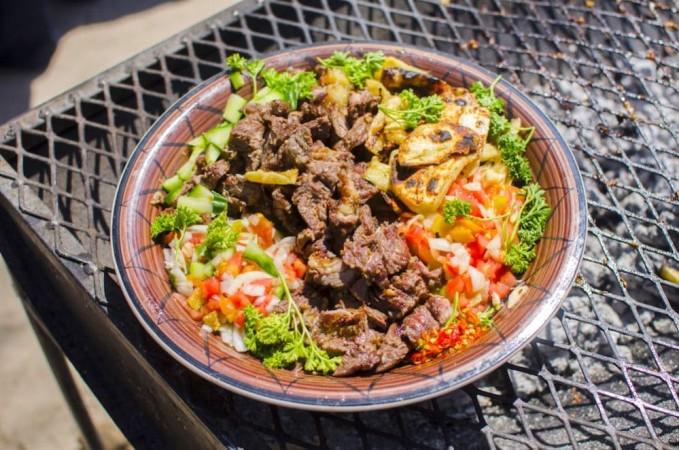
Kapana - © Pitmaster Club
Festivals & Local Celebrations
Kasane Cultural Festival
This annual festival is a lively celebration of Tswana culture, typically held in July. The Kasane Cultural Festival brings together local performers, artisans, and food vendors to showcase the region’s traditions. Visitors can enjoy traditional music and dance performances, including energetic drumming and graceful dance routines. The festival also features craft stalls where you can purchase handmade jewelry, textiles, and traditional art. The event provides a colorful and immersive experience, allowing visitors to engage deeply with Tswana culture.
Botswana Day
Celebrated on September 30th, Botswana Day marks the country’s independence from Britain in 1966. In Kasane, this national holiday is observed with parades, cultural performances, and community gatherings. The streets come alive with colorful decorations and patriotic displays, while local schools and organizations participate in festive activities. Traditional music and dance performances highlight Botswana’s cultural heritage, and special events are organized to foster a sense of national pride and unity. It’s a great opportunity to experience the country’s history and culture in a celebratory atmosphere.

Botswana Day - © The Diplomatist
What to Do in Kasane
- Safari Tours: Embark on thrilling safaris in Chobe National Park, where you can explore diverse habitats and encounter Africa’s iconic wildlife, including elephants, lions, and hippos. Game drives and guided tours provide exceptional opportunities to observe wildlife in their natural environment.
- Fishing Trips: The Chobe River is a prime location for fishing enthusiasts. Experience tranquil fishing trips where you can catch various fish species, including tiger fish. The serene river setting makes for a relaxing and enjoyable fishing experience.
- Nature Walking Tours: Discover the beauty of Kasane’s landscapes on guided nature walks. Explore the flora and fauna of the Kasane Forest Reserve or take part in walking tours around the town to learn about its history and wildlife.
- Boat Cruises: Enjoy scenic boat cruises on the Chobe River, offering a unique perspective on the surrounding wildlife and natural beauty. These cruises are ideal for spotting hippos, crocodiles, and a variety of bird species, all while enjoying a leisurely ride.
Shopping in Kasane
- Kasane Market: This bustling market is the heart of local shopping in Kasane, providing an authentic glimpse into the region’s everyday life. Here, you can explore a diverse range of goods, from traditional crafts and textiles to fresh local produce and handmade jewelry.
- Souvenir Shop: For those looking to pick up mementos of their visit, the Souvenir Shop provides a range of keepsakes that capture the spirit of Kasane. From T-shirts and mugs featuring local themes to various branded items, this shop offers convenient options for travelers seeking light and easy-to-carry souvenirs.
- Craft Market: Focused on locally made crafts, the Craft Market offers visitors a chance to explore a selection of pottery, woven baskets, and traditional textiles. Each item is crafted by local artisans, showcasing the rich cultural heritage and craftsmanship of the region.

Safari Tours at Chobe National Park - © The Global Alliance of National Parks
Weather in Kasane: Best Time to Visit
Kasane experiences two distinct seasons: the wet season and the dry season.
Wet Season in Kasane
The wet season in Kasane is characterized by warm temperatures ranging from 20°C to 35°C (68°F to 95°F). This period sees frequent afternoon thunderstorms that provide much-needed rain and refresh the landscape. The lush greenery and vibrant vegetation make it an excellent time for nature enthusiasts to witness the region’s beauty. Wildlife viewing is still possible, though animals may be more dispersed due to abundant water sources.
Dry Season in Kasane
During the dry season, temperatures range from 10°C to 30°C (50°F to 86°F), with sunny, clear days and cooler nights. This is the ideal time for outdoor activities and safaris, as the lack of rain causes wildlife to congregate around remaining water sources, making for easier sightings. The pleasant weather and lower humidity create a comfortable environment for exploring Kasane and its surrounding attractions.
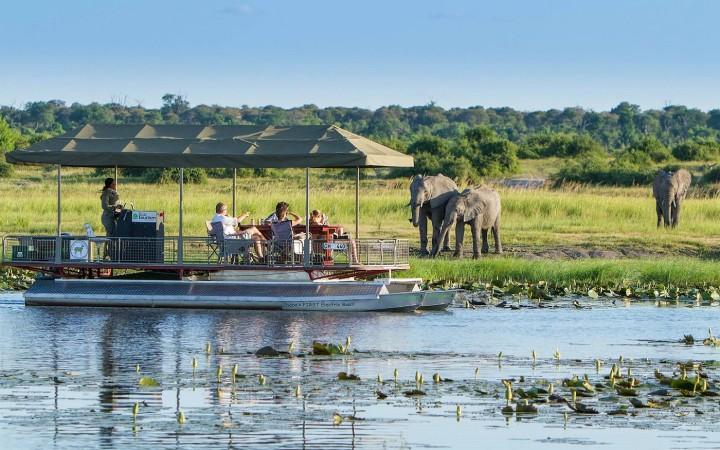
Boat Cruises along Chobe River - © Chobe National Park
Observing Wildlife Etiquette in Kasane
When exploring the natural beauty of Kasane and its surrounding wildlife areas, it's important to follow these guidelines to ensure a respectful and responsible experience:
- Maintain a Safe Distance: Always keep a respectful distance from wildlife to avoid disturbing them. This helps prevent stress on the animals and ensures your safety. Use binoculars or zoom lenses to see wildlife from a distance without invading their space.
- Follow Guide Instructions: Adhere to the instructions of your guide or park ranger during safaris and wildlife tours. Guides are trained to ensure both your safety and the well-being of the animals, and their guidance helps minimize environmental impact.
- Avoid Feeding Animals: Do not feed wildlife, as this can alter their natural behaviors and diet. Feeding animals can cause them to become dependent on human food and disturb their normal foraging behaviors.
- Keep Noise to a Minimum: Maintain a quiet and calm demeanor while observing wildlife. Loud noises can startle animals and cause them to flee or behave erratically. Enjoy the experience silently and respectfully.
- Respect Wildlife Habitats: Stay on designated paths and avoid trampling vegetation or disturbing natural habitats. Protecting the environment helps preserve the ecosystem for future visitors and wildlife.
- Dispose of Waste Properly: Carry out all trash and dispose of waste in designated bins. Littering can harm animals and diminish the natural attractiveness of the place.
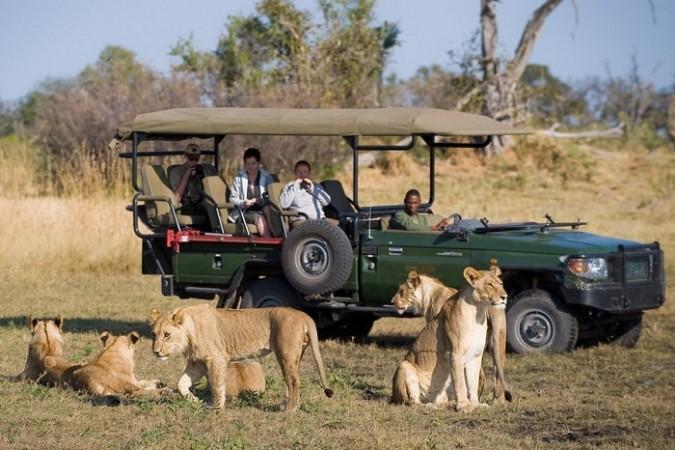
Observing Wildlife at Chobe National Park - © Medium
Essential Travel Information
Getting Around Kasane
- Local Taxis: Taxis are readily available and can be hailed on the street or booked through local services. They offer a flexible way to navigate the town and nearby areas.
- Car Rentals: Renting a car is a popular choice for exploring Kasane and the surrounding attractions, including Chobe National Park. Several rental agencies operate in the area, providing a range of vehicles.
- Public Buses: Public buses connect Kasane with other major towns and cities in Botswana. They are a cost-effective option for longer journeys.
- Guided Tours: Many visitors opt for guided tours, which include transportation to key attractions. These tours often provide expert insights and ensure a hassle-free experience.
ATM & Banking Services
In Kasane, visitors can easily manage their financial needs with a range of banking services. ATMs are conveniently located throughout the town, allowing for easy cash withdrawals using international credit and debit cards. Full banking services are available at local branches, including account management, currency exchange, and financial assistance. Currency exchange services can also be found at various locations, including hotels and major establishments, ensuring that you have access to the local currency when needed.
Where to Stay in Kasane
- Luxury Lodges: For a premium experience, luxury lodges provide upscale amenities, stunning views, and exceptional service. These lodges often include guided safari experiences and are located in picturesque settings, offering a high level of comfort and sophistication.
- Mid-Range Hotels: Comfortable and well-equipped, mid-range hotels offer a balance of quality and affordability. They provide convenient locations and good access to local attractions, making them a practical choice for travelers seeking comfort without breaking the bank.
- Budget Lodgings: For those traveling on a budget, there are options that provide basic amenities at a lower cost. These accommodations offer a more economical way to stay in Kasane while still ensuring a comfortable experience.
- Guesthouses: Guesthouses and bed-and-breakfasts offer a more personal touch, with cozy atmospheres and often include breakfast. These options provide a homey feel and a chance to experience local hospitality.
Articles for you

Explore Yala National Park - Sri Lanka Travel, Asia
Tucked away in Sri Lanka’s southeastern corner, Yala National Park is where wild nature meets deep tradition. Known worldwide for its leopard population, the park is also home to elephants, sloth bears, crocodiles, and hundreds of bird species. Beyond wildlife, Yala opens doors to a cultural landscape dotted with ancient temples, Buddhist ruins, and coastal villages. For travelers seeking more than just a safari, Yala offers a chance to explore eco-tourism, local communities, and sacred heritage sites.
Population: The Yala National Park area doesn’t have a human population.
Economy: The economy around Yala National Park thrives on a blend of eco-tourism, agriculture, and local services. Safari tours, eco-lodges, and cultural experiences drive steady income for nearby towns like Tissamaharama and Kataragama, supporting thousands of families.
Landmarks: Famous for Block I of Yala and wildlife encounters, including elephants, sloth bears, crocodiles, and exotic bird species.

Explore Galle - Sri Lanka Travel, Asia
Nestled on Sri Lanka’s southern coastline, Galle is a vibrant city where history meets the sea. Its cobbled streets, colonial architecture, and serene beaches make it a must-visit destination for travelers seeking a blend of culture, adventure, and relaxation. A UNESCO World Heritage site, Galle captivates visitors with its Dutch Fort, bustling markets, and friendly locals. Whether you’re exploring the ramparts at sunset or savoring fresh seafood by the shore, Galle promises an unforgettable journey into Sri Lanka’s heritage.
Population: Approximately 113,000 in 2023.
Economy: Galle’s economy thrives on tourism, trade, and fisheries. The city’s historic fort, colonial architecture, and coastal charm draw thousands of international visitors each year, making tourism its main economic driver. Fishing remains vital for local livelihoods, supplying fresh seafood across the region.
Landmarks: Famous for the Galle Fort, Dutch Reformed Church & Maritime Museum, and Unawatuna Beach.

Explore Bentota - Sri Lanka Travel, Asia
Nestled along Sri Lanka’s southwestern coast, Bentota is a tropical paradise that blends golden beaches, vibrant culture, and thrilling adventures. Famous for its calm waters, luxury resorts, and scenic river estuary, Bentota has become a top destination for travelers seeking both relaxation and authentic experiences. From serene beach walks at sunrise to adrenaline-pumping water sports, this coastal town offers a perfect balance of leisure and exploration. With its proximity to Colombo and Galle, Bentota is easy to reach, making it an ideal stop for both short escapes and extended holidays.
Population: Approximately 37,000 in 2023.
Economy: Bentota’s economy thrives mainly on tourism, which drives local businesses such as hotels, restaurants, and wellness retreats. The town also benefits from fishing, coconut cultivation, and handicrafts like wood carving and batik textiles. Many residents rely on the growing demand for water sports and Ayurvedic treatments, making tourism the backbone of both income and employment in the area.
Landmarks: Famous for Bentota Beach, Bentota River Safari, and Kande Vihara Temple.

Explore Mirissa - Sri Lanka Travel, Asia
Mirissa is a charming coastal town on Sri Lanka’s southern shoreline. Known for its golden beaches, turquoise waters, and vibrant marine life, it has become a must-visit stop for travelers exploring the island. Many come for whale watching, surfing, and sunset views at Coconut Tree Hill, but Mirissa offers much more than postcard beauty. The fishing boats you see anchored by the bay carry generations of stories. Local traditions, delicious cuisine, and a laid-back rhythm of life shape every visitor’s experience.
Population: Approximately 4,700 in 2023.
Economy: Mirissa’s economy is largely shaped by its coastal location. Fishing has long been the backbone of local livelihoods, with generations relying on the Indian Ocean for income. In recent decades, tourism has become the main driver of growth, thanks to whale watching, surfing, and beachside hospitality.
Landmarks: Famous for Mirissa Beach, Coconut Tree Hill, and Parrot Rock Bridge.

Explore Nuwara Eliya - Sri Lanka Travel, Asia
Tucked away in the Central Highlands of Sri Lanka, Nuwara Eliya is often called “Little England”. With its rolling tea plantations, cool misty mornings, and colonial charm, this mountain town feels like a step into another world. Travelers come here to breathe fresh air, walk through flower gardens, sip the finest Ceylon Tea, and enjoy a pace of life far from the island’s busy cities. Whether you’re drawn by scenic landscapes, heritage architecture, or the warmth of its people, Nuwara Eliya is a destination that blends nature, culture, and history in perfect harmony.
Population: Approximately 781,000 in 2023.
Economy: Nuwara Eliya’s economy thrives mainly on tea production, as it sits in the heart of Sri Lanka’s central highlands, famous worldwide for Ceylon Tea. The city also benefits from a growing tourism industry, attracting visitors with its colonial charm, cool climate, and scenic landscapes.
Landmarks: Famous for Gregory Lake, Hakgala Botanical Garden, and Victoria Park.

Explore Sukau - Malaysia Travel, Asia
Nestled on the banks of the Kinabatangan River in Sabah, Malaysian Borneo, Sukau is a destination where wildlife, culture, and conservation come together. Known as one of Asia’s top spots for river safaris and eco-tourism, this quiet village offers a front-row seat to encounters with Bornean orangutans, pygmy elephants, proboscis monkeys, and exotic birdlife.
Population: Approximately 1,400 in 2019.
Economy: Sukau’s economy is shaped by its riverine location and natural resources. Traditionally, the Orang Sungai community relied on fishing, small-scale farming, and forest gathering for their livelihood. Today, the village has shifted toward eco-tourism, with river cruises, jungle trekking, and homestays providing income.
Landmarks: Famous for the Kinabatangan River cruises, Gomantong Caves, and Ox-bow lakes and wetlands.
